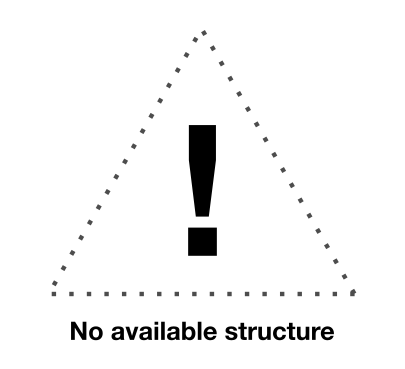Q28IU6
Gene name |
hoxd1 (TNeu039b14.1) |
Protein name |
Homeobox protein Hox-D1 |
Names |
|
Species |
Xenopus tropicalis (Western clawed frog) (Silurana tropicalis) |
KEGG Pathway |
xtr:549432 |
EC number |
|
Protein Class |
|

Descriptions
Autoinhibitory domains (AIDs)
Target domain |
205-265 (Homeodomain) |
Relief mechanism |
Partner binding |
Assay |
|
Accessory elements
No accessory elements
Autoinhibited structure

Activated structure

1 structures for Q28IU6
| Entry ID | Method | Resolution | Chain | Position | Source |
|---|---|---|---|---|---|
| AF-Q28IU6-F1 | Predicted | AlphaFoldDB |
No variants for Q28IU6
| Variant ID(s) | Position | Change | Description | Diseaes Association | Provenance |
|---|---|---|---|---|---|
| No variants for Q28IU6 | |||||
No associated diseases with Q28IU6
4 regional properties for Q28IU6
| Type | Name | Position | InterPro Accession |
|---|---|---|---|
| domain | Homeodomain | 203 - 265 | IPR001356 |
| conserved_site | Homeobox, conserved site | 236 - 259 | IPR017970 |
| domain | Homeodomain, metazoa | 225 - 236 | IPR020479-1 |
| domain | Homeodomain, metazoa | 240 - 259 | IPR020479-2 |
1 GO annotations of cellular component
| Name | Definition |
|---|---|
| nucleus | A membrane-bounded organelle of eukaryotic cells in which chromosomes are housed and replicated. In most cells, the nucleus contains all of the cell's chromosomes except the organellar chromosomes, and is the site of RNA synthesis and processing. In some species, or in specialized cell types, RNA metabolism or DNA replication may be absent. |
2 GO annotations of molecular function
| Name | Definition |
|---|---|
| DNA-binding transcription factor activity, RNA polymerase II-specific | A DNA-binding transcription factor activity that modulates the transcription of specific gene sets transcribed by RNA polymerase II. |
| RNA polymerase II cis-regulatory region sequence-specific DNA binding | Binding to a specific upstream regulatory DNA sequence (transcription factor recognition sequence or binding site) located in cis relative to the transcription start site (i.e., on the same strand of DNA) of a gene transcribed by RNA polymerase II. |
No GO annotations of biological process
| Name | Definition |
|---|---|
| No GO annotations for biological process |
11 homologous proteins in AiPD
| UniProt AC | Gene Name | Protein Name | Species | Evidence Code |
|---|---|---|---|---|
| P23459 | HOXD8 | Homeobox protein Hox-D8 | Gallus gallus (Chicken) | PR |
| A2T6Z0 | HOXB1 | Homeobox protein Hox-B1 | Pan troglodytes (Chimpanzee) | SS |
| P10105 | lab | Homeotic protein labial | Drosophila melanogaster (Fruit fly) | EV |
| P31268 | HOXA7 | Homeobox protein Hox-A7 | Homo sapiens (Human) | SS |
| P14653 | HOXB1 | Homeobox protein Hox-B1 | Homo sapiens (Human) | SS |
| P49639 | HOXA1 | Homeobox protein Hox-A1 | Homo sapiens (Human) | SS |
| P09022 | Hoxa1 | Homeobox protein Hox-A1 | Mus musculus (Mouse) | SS |
| O08656 | Hoxa1 | Homeobox protein Hox-A1 | Rattus norvegicus (Rat) | SS |
| A2D649 | HOXB1 | Homeobox protein Hox-B1 | Macaca mulatta (Rhesus macaque) | SS |
| Q8JH55 | hoxb8b | Homeobox protein Hox-B8b | Danio rerio (Zebrafish) (Brachydanio rerio) | PR |
| F1Q4R9 | meox1 | Homeobox protein MOX-1 | Danio rerio (Zebrafish) (Brachydanio rerio) | PR |
| 10 | 20 | 30 | 40 | 50 | 60 |
| MNSYLEYTSC | GDVVAFSPKF | CRSDQRNMTL | QPYPGSGADH | PFMPVGGVPG | SVAHQASHQS |
| 70 | 80 | 90 | 100 | 110 | 120 |
| PALYAPCSLD | VAYEPPPPSD | YSFLHSSTDY | DYYGSNHLVE | ETGGHIPYGS | SVFPGNGSYI |
| 130 | 140 | 150 | 160 | 170 | 180 |
| LNGQLSYRTL | GEETQMAQIA | QCKEPLEVYP | GGNLQSISPS | PGTYPKPASP | ASDTHVSTFD |
| 190 | 200 | 210 | 220 | 230 | 240 |
| WMKVKRNPPK | KSLQSEYGVA | SPPCTVRTNF | TTKQLTELEK | EFHFNKYLTR | ARRIEIANSL |
| 250 | 260 | 270 | 280 | 290 | 300 |
| QLNDTQVKIW | FQNRRMKQKK | REREGSLPNS | PPSGPASSIC | VKTPLSKSVH | ETATLSPSKD |
| V |